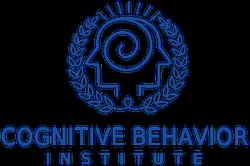Are you struggling to figure out why your experiencing unwanted, intrusive, and sometimes scary thoughts? Do you ever think to yourself, “Why do I continue to do things over and over again?” You could be struggling with Obsessive Compulsive disorder (OCD). We will explore what OCD is and it’s prevalence, symptoms, causes, and treatment.
But first let me tell you what it isn’t. OCD is nothing to be ashamed about. It’s not a personal defect, it doesn’t mean that you’re a bad or crazy person, and it’s not your fault!
OCD is a mental illness, a specific anxiety condition that effects millions of people. Recent studies suggest as many as 2 in every 100 people may suffer from this condition (2%). OCD is characterized by persistent, intrusive, unwanted thoughts, urges or images that cause distress and anxiety. OCD compulsions are repetitive behaviors that the sufferer feels driven to perform. These repetitive, ritualistic behaviors or mental acts are performed to reduce anxiety and distress related to the obsessions and/or to prevent something bad from happening; however, engaging in the compulsions provide only temporary relief from distress and actually further perpetuates the OCD cycle.
Obsessions often cluster around certain themes. Some examples are fear of contamination from germs or dirt, contaminating someone else, fear of losing control coupled with aggressive and sometimes horrific thoughts/images about harming yourself or others, sexual or religious content, or needing things perfectly symmetrical. Symptoms of obsessions may include fear/avoidance of touching an object that others have touched, images/thoughts of hurting yourself or someone else that are unwanted and cause significant distress, thoughts of losing control and harming yourself or others, severe anxiety and distress about unpleasant sexual images repeating in your mind.
Compulsions are ritualistic, repetitive behaviors that you feel driven to perform. As with obsessions, compulsions typically have themes, including but not limited to washing and cleaning, checking/counting, orderliness, following a strict routine, and demanding reassurances. Compulsive signs and symptoms include washing hands excessively to the point of cracking/bleeding orexcessively checking if doors are locked, the stove is off, or the candles are blown out. Mental compulsive symptoms include mental counting in a certain order/pattern, excessively saying silent prayers or words, and arranging items a certain way. Compulsive behaviors are performed with the intention of trying to escape or reduce anxiety or the presence of obsessions.
The cause of OCD is not fully understood. Primary theories include biology, genetics, or environment. Risk factors include family history, stressful life events and other mental health disorders. The course of OCD usually begins in the teen or young adult years, although children can also develop OCD. The symptoms usually begin gradually,and tend to wax and wane in severity throughout life. The good news is OCD Cognitive Behavior Therapy: Exposure and Response Prevention (ERP) is the gold standard, evidence-based therapy for those struggling with OCD and other anxiety disorders. In addition, medication management can be used in combination with CBT/ERP. If you are struggling with OCD and or anxiety, please reach out and talk to your doctor or mental health professional.
For more information regarding OCD or information about scheduling an appointment, Cognitive Behavior Institute can be reached at:

